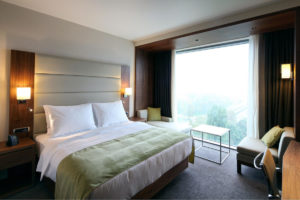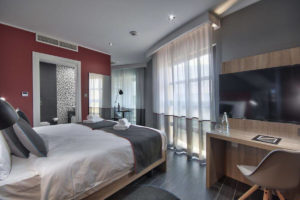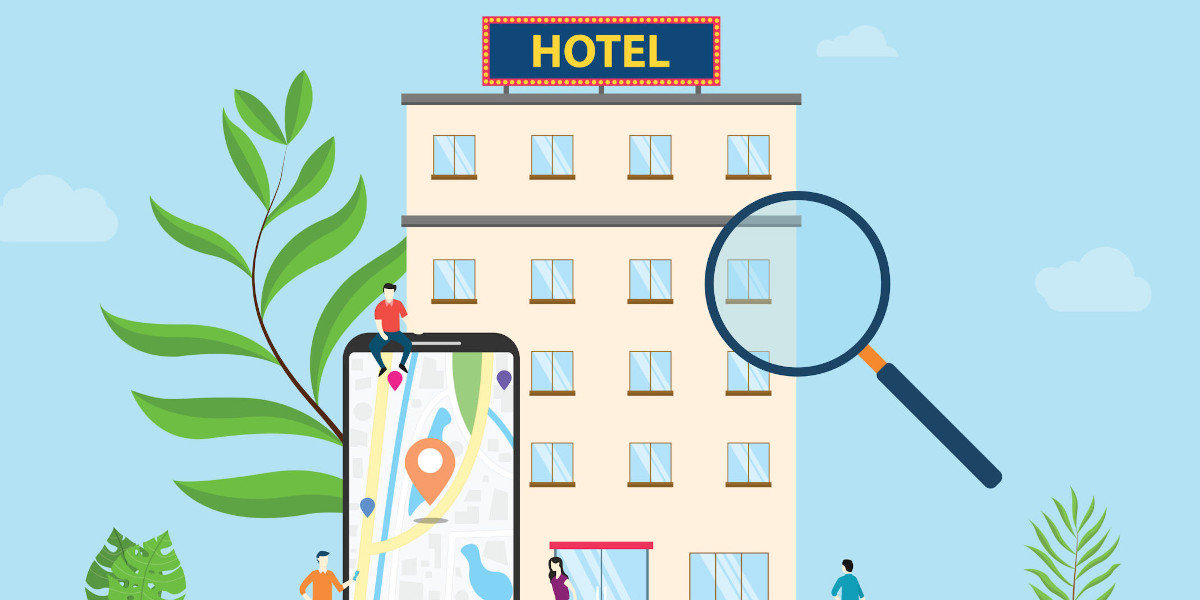Types of Hotel Rooms: how to correctly manage guests expectations
There are two main types that need to be considered in the hotel industry – rooms and services. Proper management of these inventories is crucial for a smooth operation and maximizing revenue. In this article, we will explore the differences between room inventory and service inventory and the importance of effectively managing both.
Room Inventory
Room inventory refers to the number and types of rooms available for booking within a hotel or any accommodation establishment. This includes different room categories such as single rooms, double rooms, suites, etc. It is essential to have an accurate count of available rooms at any given time to ensure efficient bookings and avoid overbooking situations. Effective room inventory management also involves monitoring and updating rates based on demand and market trends.
Service Inventory
While room inventory focuses on physical accommodations, service inventory pertains to the availability and management of various services offered by hotels. These services can include dining options, spa facilities, conference rooms, transportation, and more. Just like room inventory, it is vital to keep track of the availability and utilization of these services.
Standard Room Types
- Single & Double Room – 1 or 2 bed, 1 or 2 guests
- Triple Room – 1 double and 1 single bed, 3 occupants
- Quad or Family Room – 3 beds (1 double and 1 single), 4 occupants
Additional Room Types
- Suite or Executive Suite – A room with separate living space and/or multiple bedrooms
- Connecting rooms
- Deluxe room
Other Room Types
- Apartments
- Accessible Rooms – a room designed to accommodate specific needs of disabled people
- Studio – A room with a studio bed or a sofa bed
Let’s explore some of the most common types of hotel rooms:
1. Standard Room
The standard room, also known as a single or double room, is the most basic type of hotel accommodation. It typically includes a bed, a writing desk, and an en-suite bathroom.
2. Suite
A suite is a luxurious and spacious room that consists of separate living and sleeping areas. It often includes additional amenities such as a kitchenette, dining table, and sometimes even a private balcony.
3. Deluxe Room
A deluxe room offers more space and upscale amenities compared to a standard room. It may feature a larger bed, better views, or additional seating areas.
4. Connecting/Adjoining Rooms
Connecting or adjoining rooms are designed for families or groups traveling together. These rooms have a door that connects them, allowing easy access between the two spaces while maintaining privacy.
5. Family Room
A family room is specifically designed to accommodate families with children. It typically includes additional beds or a sofa bed, making it suitable for parents and their little ones. Family rooms often have kid-friendly amenities and larger floor space to ensure everyone can relax comfortably.
6. Executive Room
An executive room is tailored for business travelers who require a workspace within their accommodation. It usually offers amenities like a work desk, ergonomic chair, and enhanced internet connectivity.
7. Accessible Room
Accessible rooms are designed to cater to guests with disabilities or limited mobility. They feature wider doorways, grab bars in the bathroom, lowered fixtures, and other accessibility features to ensure ease of movement and comfort.
Standard Room

A standard room is typically the most basic type of accommodation offered by hotels. It usually comes with essential amenities and services that ensure a comfortable stay for guests. Although the specific features may vary from one hotel to another, here are some common characteristics of a standard room:
- Bedding: A standard room generally includes either a single queen-size bed or two twin beds. The bedding is clean, comfortable, and designed to provide a good night’s sleep.
- Bathroom: Most standard rooms come with an en-suite bathroom equipped with a shower, toilet, and sink. The bathroom may also include basic toiletries such as soap, shampoo, and towels.
- Furniture: The room is furnished with essential pieces like a writing desk, chair, bedside tables, and a wardrobe or closet. These furniture items ensure convenience and storage space for guests.
- Television and Wi-Fi: To keep guests entertained and connected, a standard room often has a television with cable or satellite channels. Additionally, access to Wi-Fi is commonly available so that guests can stay connected with their devices.
- Air Conditioning/Heating: Depending on the climate of the location, a standard room is equipped with either air conditioning or heating facilities to maintain a comfortable temperature throughout the year.
- In-room Safe and Mini-fridge: Some standard rooms may offer additional amenities like an in-room safe to store valuable belongings and a mini-fridge to keep beverages and snacks chilled.
While the amenities mentioned above are typically included in a standard room, it’s important to note that the level of comfort and luxury may vary depending on the hotel’s star rating and price range. Higher-end hotels may offer more spacious rooms, upgraded furnishings, and additional services such as room service or concierge assistance.
Suite Room
Hotel room suites are spacious accommodations with separate living areas, bedrooms, and sometimes even additional bathrooms. They are designed to provide a higher level of comfort and convenience, making them ideal for families, groups of friends, or those who simply desire extra space during their stay. In this article, we will explore some of the most common types of hotel room suites:
1. Junior Suite
A junior suite is a larger room with a seating area that is partially separated from the bedroom. It offers more space than a standard room but does not have a fully separate living area.
2. Executive Suite
An executive suite is a luxurious accommodation that features a separate living room, bedroom, and often a dining area. It is designed with business travelers in mind and provides ample space for work-related activities.
3. Presidential Suite
The presidential suite is the epitome of luxury. It is the most upscale and spacious suite a hotel has to offer. With multiple bedrooms, grand living areas, dining rooms, and private balconies, these suites are synonymous with opulence.
4. Family Suite
Family suites are specially designed with the needs of families in mind. They typically consist of multiple bedrooms, a living area, and often a kitchenette or small kitchen.
5. Spa Suite
Spa suites are perfect for those seeking relaxation and rejuvenation during their hotel stay. They often include a private spa or jacuzzi within the room, allowing guests to indulge in pampering treatments without leaving their suite. Spa suites may also offer additional amenities like sauna rooms, massage tables, or even personal therapists.
Deluxe Room

A deluxe room is a higher-tier accommodation option offered by hotels that provides additional space, amenities, and services compared to standard rooms. It is designed to provide guests with an enhanced level of comfort and luxury during their stay.
Deluxe rooms are often larger in size than standard rooms, allowing guests to have more space for relaxation and movement. These rooms typically come with a separate seating area, providing a designated space for guests to unwind, work, or entertain visitors.
Deluxe rooms are known for their upscale features and amenities, which set them apart from other room types. While the specific offerings may vary from one hotel to another, here are some common features you can expect in a deluxe room:
- Luxurious Bedding: Comfort is paramount in a deluxe room, and you can expect to find a plush, king-sized bed with high-quality linens, pillows, and duvets.
- Spacious Bathroom: Deluxe rooms often include a spacious en-suite bathroom equipped with a bathtub, shower, premium toiletries, and fluffy towels.
- In-Room Entertainment: Guests can enjoy an array of entertainment options, including a flat-screen TV with cable/satellite channels, DVD player, and sometimes even a stereo system.
- Mini-Bar and Coffee/Tea Facilities: A well-stocked mini-bar with a selection of beverages and snacks is usually available in deluxe rooms. Additionally, coffee and tea-making facilities offer convenience for guests to enjoy a hot beverage at any time.
- Workstation: For business travelers or those needing to catch up on work, a deluxe room often provides a dedicated workstation with a comfortable chair, desk, and access to high-speed internet.
- Complimentary Services: Some hotels may offer complimentary services like welcome drinks, daily newspapers, turn-down service, or access to exclusive lounges or club facilities.
Executive Rooms
Executive rooms are spacious and well-appointed accommodations that offer a higher level of comfort and convenience. These rooms are often located on dedicated floors or wings of the hotel, providing an exclusive and private environment for guests. The design and layout of executive rooms aim to create a comfortable living space that allows guests to work, relax, and unwind during their stay.
One key feature of executive rooms is the inclusion of a dedicated work area. These rooms usually have a large desk with ergonomic chairs, high-speed internet access, and ample electrical outlets to cater to business travelers who need a productive workspace.
In addition to the work area, executive rooms also tend to offer enhanced sleeping arrangements. Guests can expect larger beds with premium mattresses and high-quality bedding, ensuring a good night’s sleep after a long day of meetings or exploring the city. Many executive rooms also have blackout curtains, soundproofing, and climate control systems, allowing guests to customize their sleeping environment for maximum comfort.
Amenities and Services
Executive rooms come with a range of amenities and services that aim to enhance the overall guest experience. Some of the common features found in these rooms include:
- Upgraded bathroom amenities, including luxury toiletries, plush bathrobes, and slippers.
- Minibar stocked with a selection of premium beverages and snacks.
- In-room entertainment options, such as a flat-screen TV with satellite channels, DVD players, or access to streaming services.
Complimentary access to executive lounges where guests can enjoy complimentary breakfast, snacks, and beverages throughout the day.
Family Room

Family rooms are designed to accommodate families by providing ample space and essential facilities to ensure everyone’s needs are met. These rooms typically feature multiple beds and extra sleeping arrangements like sofa beds or rollaway beds. This ensures that every family member has a cozy place to rest after a long day of exploring.
One of the key advantages of family rooms is their spaciousness. They are generally larger than standard hotel rooms, providing enough room for children to play and move around freely. This extra space helps create a comfortable and relaxed environment for the whole family during their stay.
In addition to the size, family rooms also offer a range of amenities to enhance the overall experience. These amenities can include separate living areas, kitchenettes, and even private balconies. Having a separate living area allows parents and children to have their own space, ensuring privacy and peace when needed.
Kitchenettes in family rooms are an excellent convenience for families traveling with young children. They provide a space for parents to prepare snacks or small meals, saving both time and money. This feature can be especially helpful for families with dietary restrictions or picky eaters.
Furthermore, family rooms often come equipped with entertainment options such as flat-screen TVs, game consoles, or DVD players. This ensures that children are entertained during downtime, allowing parents to relax and unwind without having to worry about keeping their kids occupied.
Accessible Room
An accessible room is a specially designed hotel room that meets the needs of guests with disabilities. These rooms are thoughtfully equipped to ensure that guests can comfortably navigate their surroundings and have a pleasant stay. They are usually located on the ground floor or close to elevators for easy access.
Here are some common features you can expect to find:
- Wheelchair Accessibility: Accessible rooms are spacious enough to accommodate wheelchairs and provide clear pathways for easy maneuverability.
- Grab Bars and Handrails: Bathrooms in accessible rooms are equipped with grab bars and handrails near the toilet, shower, and bathtub. These assistive devices help individuals with stability and balance.
- Roll-in Showers: Many accessible rooms have roll-in showers with benches and handheld showerheads. These allow guests to shower comfortably without any obstructions.
- Lowered Fixtures: To cater to wheelchair users, accessible rooms often have lowered sinks, countertops, and light switches.
- Visual Alarms: For guests with hearing impairments, accessible rooms may be equipped with visual alarms that emit bright flashing lights to alert them of any emergencies.
- Lowered Beds: Some accessible rooms feature beds that are lowered for easy transfer from a wheelchair.
- Accessible Furniture: Furniture in these rooms is designed to provide ample space for wheelchair maneuverability, and seating may include options with extra support.
Hotel room inventory management is a critical aspect of successful hotel operations. By leveraging technology, data analysis, and strategic planning, hotels can optimize room availability, maximize revenue potential, and enhance guest satisfaction. With effective inventory management, hotels can stay ahead of the competition and deliver exceptional experiences to their guests.

